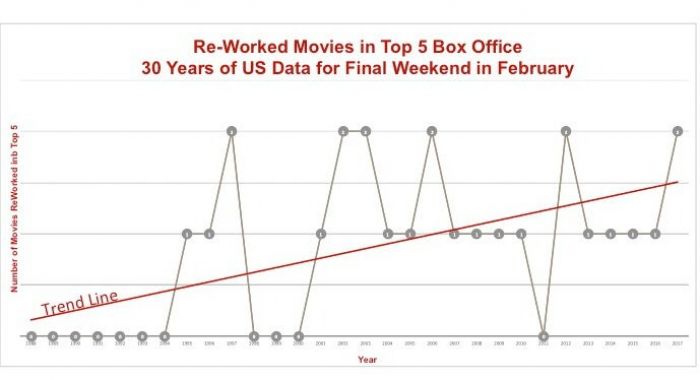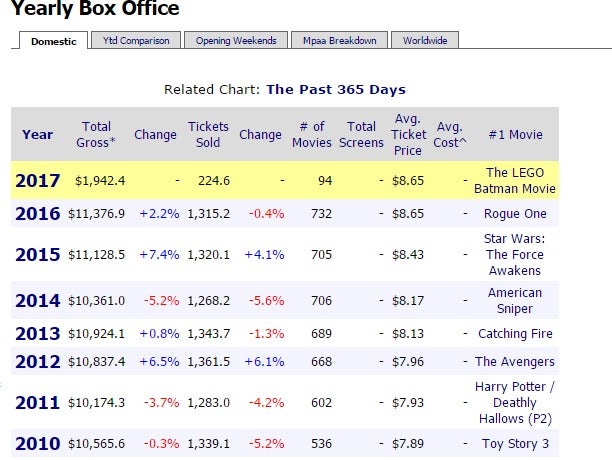Mark Ritson: Learn from Hollywood and re-work your biggest hits

I spent all last week working with a global beauty brand that is going through a significant revitalisation under a new CMO. The brand is question continues to do well in the market but it’s slowing down and the new CMO has spent the last year renewing, refocusing and recharging almost every element of the brand and its business. New positioning, new visual merchandising, new staff training, new brand tracking. You name it and she is upgrading it.
The only thing that isn’t being upgraded is the SKU (stock keeping unit) count. Like many companies, my client has managed to gradually breed a gigantic army of different products, sizes and variants and the final tally now crosses the four-figure mark – and counting. When my CMO put up her killer slide showing that 2% of the SKUs are delivering almost half the company’s sales there were audible gasps from the country teams attending the meeting.
It’s worth pondering just how this brand got to this point. The story might be familiar. Over the last two decades the company in question has been highly agile and innovative and launched many new serums and creams into the market. But alongside that bright white spark of new innovation there should have been the dark shadow of product deletion. Brands that create should also kill. But like all too many companies my client wanted the thrill of new products and the reassurance of maintaining the existing portfolio. Play that approach out by 15 or 20 years and you have an overstocked portfolio that is confusing beauty associates, customers and marketers alike.
The fix is coming of course. My CMO has a three-year plan to get the SKU count down to a more profitable and focused number. The other key to her product strategy is to stop being so wildly diversified when it comes to product innovation. Rather than try and come up with completely new product lines she is focusing her team on new variants of the most successful existing SKUs.
Having explained the need for less SKUs she gave her team a morning break and then explained to me that the next part of her presentation would be about the need to reduce the often unsuccessful totally new innovation and increase the number of successful products that are re-worked instead. I nodded as she explained this to me. “I’ll need an example of a company that successfully moved from new innovation to re-working existing formulas in about three minutes time,” she said as she strode back to the stage. “I’ll call on you from up there and you look surprised and then give them some examples,” she added over her shoulder.
Looking surprised was not going to be a problem. I could not for the life of me think of a case study or example I could use and I could see my CMO accelerating through her bullet points and coming closer to me. I was suddenly starting to regret not paying more attention to the brief she had sent me. I should have re-read it last night rather than going to the cinema and watching….
“Mark!” my CMO announced. “Maybe you have some examples you can share with the team?”
“Movies!” I explained to the team in front of me. “Think movies.”
If you are under 30 this next paragraph is going to seem odd. But originally movies were a 90-minute narrative that never occurred again. When Humphrey Bogart told Claude Rains at the end of Casablanca that this was going to be “the beginning of a beautiful friendship” we did not get to see how that played out in sequel called ‘Casablanca II – Friends Indeed’. The final, famous Rosebud scene in Citizen Kane did not lead to a prequel in which a young Charles Foster Kane learns to love and laugh in ‘Young Boy Kane – The Sledding years’. And when ET finally made it onto the spaceship and flew home we did not get to see him actually touch down on an alien planet in ‘ET2 – Return to Planet Xylox’.
Of course, there were exceptions. Star Wars was always designed to be a series and its various sequels and prequels opened the eyes of many in Hollywood to the commercial possibilities of re-using characters in further films. The Godfather Part II proved that a subsequent variation can sometimes prove superior to the original. But in the 20th Century these were exceptions to an otherwise widespread rule that you made a movie and then you started again with a blank page.
Things really started to change in the nascent 21st Century as movie studios realised that coming up with a successful new script, new characters and new settings was an incredibly hard thing to replicate. Why not take a success and the characters that audiences had already warmed to and take that journey further? Rather than invent a new movie each time, why not re-invent around an existing blockbuster instead?
The transition is stunning. In the eighties only two of the top grossing films at the US box office were re-invented variants of earlier movie incarnations: The Empire Strikes Back and Return of the Jedi. It was a similar story in the next decade as only two re-worked movies – The Phantom Menace and Terminator 2 – made the top ten list for the nineties. But by the noughties the number leaps to eight out of ten with the likes of Harry Potter, Spider-Man, Toy Story and the Pirates of the Caribbean all remaking themselves into new movie offerings. So far six of the top seven movies this decade have also been re-worked movies with the Avengers, more Star Wars, Lego and the Hunger Games all re-using their initial movies to make more movies. See the list below or a full breakdown since 1980 here[1].
The lesson for brands should be clear. It’s exactly the one my CMO went on to expound to her team last week. Rather than reaching far and wide for “disruptive” innovations that usually fail and often cost the earth, learn to innovate closer to home. First cut back the SKUs so that the successful products become the focus once again. Then, interrogate their formulas, their consumption and their lead users for potentially lucrative ways to innovate around the existing offer to make even more money. It’s not just a safer and less expensive way to create products, in many cases the subsequent innovations are more satisfying and commercially successful than the original products that inspired them.
 Source: Box Office Mojo
Source: Box Office MojoMost of the re-worked movies I’ve listed above, for example, were significantly more profitable and easier to make than the original movie. Toy Story 3 is better than Toy Story and took double the ticket money in the US.
Innovation is an easy word to use in meetings, but it’s a bloody hard one to deliver profitably when it comes to product development. Clearly the big bang moments of product innovation like the bagless vacuum cleaner or driverless car will continue to occupy most of the headlines but they should not dominate your R&D budget. Look for the re-work, the limited edition, the augmentation, the travel size, the co-brand, the side-car. Let the cinema industry and its remarkable revenues of recent years be your inspiration and look for the smaller, less significant but more profitable innovation.
When I’d finished my movie illustration I sat back down feeling rather pleased with myself. “I’m so pleased with that little example I’m going to turn it into my column next week,” I told my CMO when she returned to my table after her presentation concluded. “Great!” she exclaimed “And if it’s a success I’ll make it into a book”.
I was half way home on the plane before I realised how clever she had just been.
Professor Mark Ritson will be teaching the next class on the Marketing Week Mini MBA in Marketing[2] from April 2017. To find out how it could make you a more confident, more effective and more inspired marketer, and to book your place, click here[3].
References
- ^ a full breakdown since 1980 here (www.boxofficemojo.com)
- ^ Marketing Week Mini MBA in Marketing (www.marketingweek.com)
- ^ click here (www.marketingweek.com)









